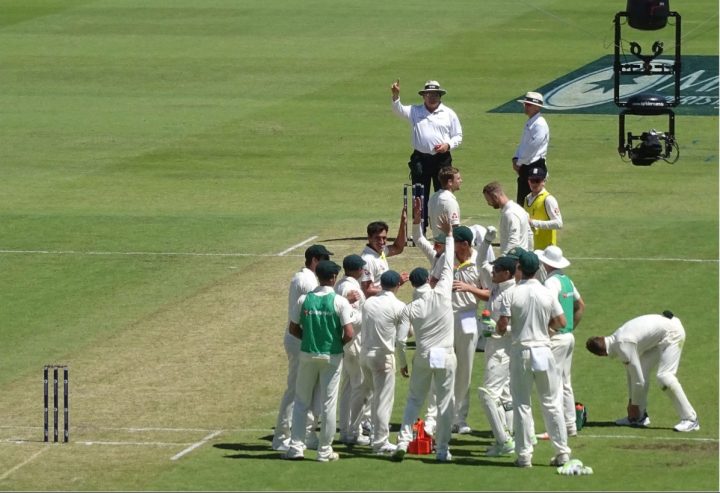A combination of endless rain and dull pitches made for a pretty dull England v Sri Lanka series. But the players should take some of the blame too, for contesting the three test matches at virtually a snail’s pace. As former Wisden editor Scyld Berry pointed out last week, their over-rates were the slowest in test history.
Up till around 1950, at least twenty overs were bowled every hour in test cricket. That’s how Bradman was once able to score 300 in a single day. The professionalisation of the game then slowed it down, and since 1980 the over-rate has never reached 15. The slowest year ever was 1990, when players could only manage 13.62 overs every sixty minutes. But if the rest of 2011 pans out like the Sri Lanka series, we’ll sink to a new low. England managed a paltry 13.26 overs an hour, and the Lankans 13.4, achieving a combined rate of 13.3.
Does it matter? As a spectator or TV viewer, I don’t find myself keenly noticing the speed of play. Poor over-rates are traditionally more of a commentators’ than a punters’ gripe – the kind of issue Jack Bannister would get very excited by. If you think about it though, slow play is a real problem. Too many matches end in draws, and too many potential cricket fans think the sport is boringly slow. True, the longeurs and rhythms of test cricket are to be cherished, but how many of us would not prefer to see more action in a day’s play? Wouldn’t we rather witness the match progress futher, and endure less inertia caused by meandering drinks breaks and lethargic field changes?
What’s the fix? One option is meaningful penalties. Players are never deterred by match-fee fines, so instead the fielding side should be penalised 20 runs for every over they fail to bowl below the required rate. That should put a spring in their step. Alas, it’s unlikely to work, partly because match referees are cowardly types, and also because the fielders could cite so many mitigating factors – such as injury to a batsman, changing the ball, moving the sightscreen – that it would be impossible to determine who was to blame. Plus, in a match scenario of a large gulf in runs and one side battling for a draw, 20 runs would be far less valuable than having an over fewer to bat out.
Another approach involves outlawing practices which waste time. These include drinks-breaks (unless it’s very hot) or anyone coming on to the field – for example, physios to treat fielders, or twelfth men to change gloves. It’s not obvious, however, how much time that would save, as the main reason for slow over-rates is fielders dawdling and the captain fiddling around.
That’s why the simplest solution is also the most radical: increase the number of balls in an over. The less time spent shuffling from one end to another, the more time there is to actually play. At present, 90 overs – or 540 balls – are scheduled for a day’s play. If we had ten-ball overs, only 54 would be required for the same quantity of cricket – at a stroke saving the time involved in 36 changeovers.
There’s no intrinsic reason why six is any more the ‘right’ number of balls then ten, or any other number, within reason. Australia and South Africa used eight-ball overs, quite happily, for many years. No doubt there are some strong arguments against – the flow and tempo of the game would change – but surely it’s worth at least a trial. Right now, cricket needs to think laterally – and if it can’t, the consequences could be tragic.
Maxie Allen









At our level, most bowlers are exhausted after four balls, let alone half a dozen. Ten? We’d need defibrillators in the pavilion :)
Strikes me both ideas are using a sledgehammer to crack a nut – not sure over rates are really that much of a problem as play can simply be extended (either at the beginning or end of the day, depending on local sunset times and conditions) to ensure the full 90 overs have been bowled. Reducing lunch / tea intervals and, in particular, resuming play more promptly after rain or bad light breaks would both be more helpful in speeding the game up.
I get this a lot when I umpire kids U13’s games. Some kids (taking their lead from the pro’s no doubt) insist on tinkering with the field even after the bowler has set off. Last night I warned our captain that the tinkering must cease when the bowler reaches his mark or I would award penalty runs to the opposition. I don’t really have any grounds to do this but in this case the message got across that they should get on with the game.
Perhaps if the umpires had the power to do this it would deter the practice?
The making-up of play doesn’t always work, though. In England, play never begins before the scheduled time (why that’s so is unclear). And at the end of the day, play often ends at 7pm even if the 90 overs haven’t been bowled. What’s more, if there have been rain breaks, any extra time at the end of the day is needed to make good those breaks, without any extra capacity to make up for the players’ tardiness.
I feel the only way to increase the over rates is to introduce serious penalties that might have to carry over from match to match. Its similar to front foot no balls in one day cricket – as the penalty is high for the transgression, there are not many bowled. I would introduce a 10 run penalty for every over less than 30 bowled in a session. The umpires would have to be tough on the batting team not to waste time, no extra drinks breaks and no runners / subs to speed the game up.
The only way you could apply a penalty per over not bowled is to put them on a clock (90 minutes of play, say), which is paused for stoppages (wickets, injuries, callable timeouts for drinks etc.). I don’t mind that idea.
Alternatively, the umpires could take the tennis approach: 20sec to face-up/start running in, 1min change of ends, plus one 3min timeout per team, per session. Any time-wasting gets a single warning then a 5-run penalty. That’s the simplest option. Leave it to umpires, not dawdling captains.
There is no real excuse for no bowling say 17 overs per hour (I can seldom remember a club game completing 20 overs ph even back in the late 80s) as we achieved this in premier league games under threat of penalty.
20/20 games stay to time, 1hr 15(?) to complete you overs, with batsmen unable to hold play up. It can be done and it is for the good of the game: slowing play down to avoid defeat is not skill (which is what we all want to see) but professionalism (fair dues to the players) which the authorities (umpires supported by the referees and ICC) need to stamp out.